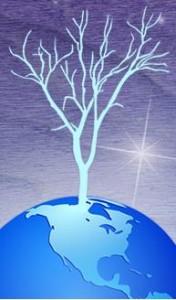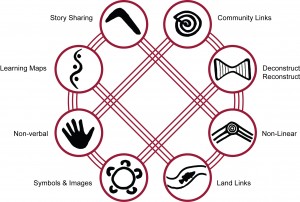The Oka Crisis
This past summer of 2010 marked the 20th anniversary of the Oka Crisis.
Through video, media archives and print material we continue today to learn from this event and the stories that people share about it. This crisis received extensive media attention across Canada and around the world. I recommend the movie Kanehsatake: 270 Years of Resistance (The Oka Crisis) (National Film Board, 1993) which can be viewed at
http://video.google.com/videoplay?docid=8939345967488327634#
It is an excellent recounting of the events, also giving the historical context. It is a feature-length, multi-award winning documentary by Native American filmmaker Alanis Obomsawin. It is set in the thick of the armed confrontation between Native American Mohawks and Canadian government forces during the 1990 two-and-a-half month standoff in the Mohawk village of Kanehsatake near the village of Oka in Quebec. There was one fatality in the crisis, Corporal Lemay.
For CBC archival information see: http://archives.cbc.ca/politics/civil_unrest/topics/99/
Twenty years after the death of Corporal Lemay, his sister Francine came forward with the story of her journey of learning, healing and reconciliation and with the publication of her French translation of the book At The Woods Edge: An Anthology of the History of the People of Kanehsatake. Francine Lemay initiated this translation project recognizing that even 20 years after the Oka event, the Francophone community around her lacked information and understanding of the Mohawk people’s history and culture.
See:
http://www.goodminds.com/booksatom/At-The-Woods-Edge-An-Anthology-of-the-History-of-.html
http://www.francinelemay.com/my-story.html
http://www.cbc.ca/canada/story/2010/07/07/f-francine-lemay-oka-reconciliation.html
October 13, 2010 No Comments
Circle of Rights
Circle of Rights is a series of 30 modules in a training program for activists about economic, social, and cultural rights.
It is published by the International Human Rights Internship Program, University of Minnesota.
Circle of Rights is aimed “primarily at trainers who are or will be engaged in training human rights activists as well as development workers, members of organizations representing disadvantaged groups and others who are addressing economic, social and cultural issues. The hope and expectation is that trainers working with these various groups will be able to take the material in the manual and, if necessary, adapt and expand upon it to conduct training programs on ESC rights and ESC rights activism.”
I first came across this site as I was trying to understand better issues around cultural rights, which is the focus of Module 17. The content of this module is relevant to Indigenous cultural rights.
See: http://www1.umn.edu/humanrts/edumat/IHRIP/circle/modules/module17.htm
However, Module 6 focuses only on the “perspectives, experiences and standards” of Indigenous peoples.
See: http://www1.umn.edu/humanrts/edumat/IHRIP/circle/modules/module6.htm
In the modules I have looked at, case examples are given from different parts of the world. Other modules may interest you. See the Table of Contents at
See: http://www1.umn.edu/humanrts/edumat/IHRIP/circle/toc.htm
October 13, 2010 No Comments
Aboriginal Contexts and Worldviews
Alternative Dispute Resolution (ADR) in Aboriginal Contexts: A Critical Review
Prepared by Wenona Victor (Sto:lo Nation) for Canadian Human Rights Commission, April 2007 (41 pages).
http://www.chrc-ccdp.ca/pdf/adrred_en.pdf
I came across this document when one of our discussion threads led to sharing meanings of “Indian Time.” The title also caught my attention as I had recently read this statement in John Ralston Saul’s book A Fair Country (2008): “our courts are far ahead of our political scientists, politicians and philosophers…[they] have now understood the First Nations’ assumptions at the time of the treaties” (p. 64).
In discussing alternative dispute resolution (ADR), Wenona Victor draws on current studies and reflections about Aboriginal contexts related to the role of power, language, women’s voices, culture and land; and the contrast of worldviews including concepts of individuality, unity of life, time, societal organization, leadership, reciprocity. “By posing both theoretical and practical questions, the text is a means by which colonial assumptions maybe be deconstructed. This analysis is helpful in shedding light on several colonial assumptions that often feed, and in many instances impede, the proper resolution of disputes between two often diametrically opposed worldviews” (p. 7).
This document informed me on other matters in addition to “relationship building in ‘Indian’ time” (p. 29). For example, my thinking was challenged in the section about the “elicitive” approach to mediation (i.e. an approach requiring the mediator to take the lead from the parties involved and recognize the process as both a functional and political one) and the Western cultural presuppositions involved in the belief that “the best mediator will be an outsider, impartial and unbiased” (p. 30). As an example that “claiming Western norms and values as universal undermines” a process like mediation, the author writes, “oral tradition within Indigenous communities…often dictates who can and cannot speak on a subject. Those who are considered impartial and neutral are also disconnected and lack personal involvement; they are therefore not authorized to speak” p. 32).
October 13, 2010 No Comments
8 Ways
I came across this site while searching “aboriginal education”. It is a site designed and maintained by the Western New South Wales Regional Aboriginal Education Team and James Cook University in Australia. It is a pedagogical framework for teachers to be able to teach Aboriginal students in a meaningful way. It discusses and has resources about Aboriginal perspectives and how to include them into the core curriculum that is set by the school boards and governments.
October 11, 2010 No Comments
4 Directions Teachings
This site is by Canadian Heritage. Its objective is “a visually stunning audio narrated resource for learning about  Indigenous knowledge and philosophy five diverse First Nations in Canada”.
Indigenous knowledge and philosophy five diverse First Nations in Canada”.
October 11, 2010 No Comments
New South Wales Aboriginal Ed
Here’s a site from the New South Wales Government in Australia. It is dedicated to Aboriginal Education. It provides examples of context-based teaching and learning projects to be used. It is obvious that the values of the Aboriginal people are considered. They address Aboriginal art and languages, and contextualize math, science, and literature for the students.
October 11, 2010 No Comments
Placing Aboriginal Perspectives in Mainstream Curricula
Learning about Walking in Beauty: Placing Aboriginal Perspectives in Canadian Classrooms. Report prepared by the Coalition for the Advancement of Aboriginal Studies (CAAS) for the Canadian Race Relations Foundation (CRRF), 2002.
http://www.crr.ca/content/view/252/538/lang,english/
This report combines findings from a 2000-2001 survey of Aboriginal and non-Aboriginal young adults with pedagogical, social and historical analyses. It offers a pedagogical framework and proposals for Canadian formal school curricula that presents Aboriginal studies for all Canadian students. “Walking in Beauty” is a term that speaks of conducting oneself in harmony with all the living world, and is respectfully borrowed from the Navajo People.
Learning About Walking in Beauty demonstrates that non-Aboriginal Canadians also want mainstream curricula to present Aboriginal histories and cultures honestly and respectfully. And since 65% of students of Aboriginal heritage are educated in provincial or territorial schools, not on reserve, most Aboriginal students are instructed using provincial or territorial curricula. “The infusion of Aboriginal perspectives throughout mandated elementary and secondary curricula will build the self-esteem and academic success of Aboriginal youth.” This report also asserts that such curricula will not only “help address the multi-generational cultural repression arising from official policies…[but also that] Aboriginal perspectives integrated across the curriculum from the earliest grades to high school will begin to address the causes of racism” in Canadian society.
September 27, 2010 No Comments



